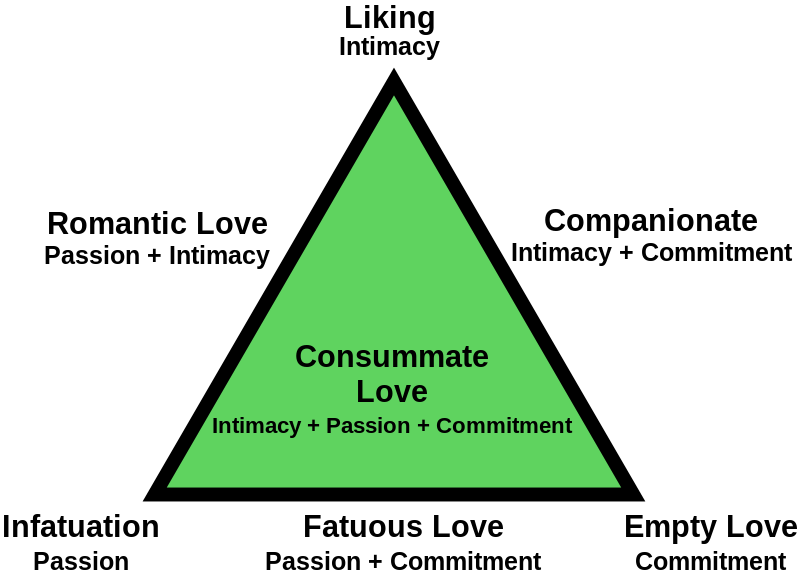
“My mistress’ eyes are nothing like the sun,
Coral is far more red than her lips’ red …
… And yet, by God, I think my love as rare
As any she belied with false compare”
(Shakespeare, Sonnet 130)
The need for love is an important human motivation, coming up frequently in research conducted by TapestryWorks and represented by the Seducer archetype. This need is associated with a number of feelings including intimacy, passion, sensuality, commitment and appreciation, and is triggered by the fear of being alone.
Many brands express this in the way they communicate, and these feelings are relevant in many categories including fragrance, fashion, cosmetics, indulgent food and travel. Häagen-Dazs and Godiva focus on the sensuality of their products, Revlon and Victoria’s Secret focus on the need to feel desired and loved and even Fiat communicate the feeling of falling in love with a car.
While there have been many theories of love, starting with Plato’s idea that its origins lay in primitive beings split in half by God and seeking out their other half, one of the most helpful is Robert Sternberg’s triangular theory of love. The triangular theory covers all the feelings associated with the Seducer, breaking them into three themes: passion, intimacy and commitment.
You could rephrase this as getting close, feeling close and keeping close. Passion is associated with desire and falling in love, intimacy with being close and connected with another person and commitment with the desire to remain bonded and attached to another person.
Before getting into how these three themes relate to each other, let’s look in more detail at each. Passion is the most physical manifestation of love and it’s well documented that there are universal preferences for certain physical traits, like symmetry and a certain waist-hip-ratio of 0.7 for women and 0.9 for men. Smell is important too, which is why we kiss, rub noses and even smell our hands after a handshake with someone else (definitely a topic for another article).
Beyond the physical, there is also evidence that people who idealize another person often have a very different understanding of who they are than they do themselves. This is even more exaggerated in the digital dating world, where there is a real danger that without direct physical contact and feedback, it is difficult to adjust our view of someone to something closer to reality rather than their online persona.
This leads to the second theme of intimacy, which is strongly associated with mental as well as physical closeness. Intimacy is the adult version of John Bowlby’s attachment theory, and the same biological systems moderate the emotional dynamics of infant-caregiver and adult romantic relationships.
Primates use grooming to reduce stress levels, and humans use hugging, cuddling and petting (and arguably gossip and laughter) to build intimacy and trust with others (driven by hormones such as oxytocin, cortisol and endorphins which manage human behavior).
Building trust is also associated with the third theme of commitment. The work of Robin Dunbar and others has shown that the size of human brains is related to the need to manage complex social relationships. The largest animal brains (relative to their body size) are specifically related to the need for commitment (or as he says “monogamous pair-bonded social systems”).
Robert Sternberg argues that different types of love reflect different combinations of passion, intimacy and commitment. Without passion, intimacy or commitment there is no love, and when all three co-exist there is ‘complete’ (or ‘consummate’) love.
Sternberg gives each combination a name and argues that relationships often go through different combinations of the three over time. With only passion, he argues that there is ‘infatuation’. He uses the term ‘liking’ when there is only intimacy and ‘empty love’ when there is only commitment.
‘Romantic love’ is the combination of passion and intimacy (without commitment), ‘companionate love’ is the combination of intimacy and commitment (without passion) and ‘fatuous love’ is the combination of passion and commitment (without intimacy). You can see the framework depicted below.

https://en.wikipedia.org/wiki/Triangular_theory_of_love
While Sternberg’s theory is not perfect, it gives a useful framework for thinking about love and more broadly about relationships in general. The Seducer archetype in our StoryWorks framework embodies the dynamics of passion, intimacy and commitment, capturing key human motivations. Have a seductive Valentine’s Day and I hope you find “the one for whom the sun shines” (as Rameses the Great said about Nefertari).
REFERENCES
The Science of Love and Betrayal by Robin Dunbar





